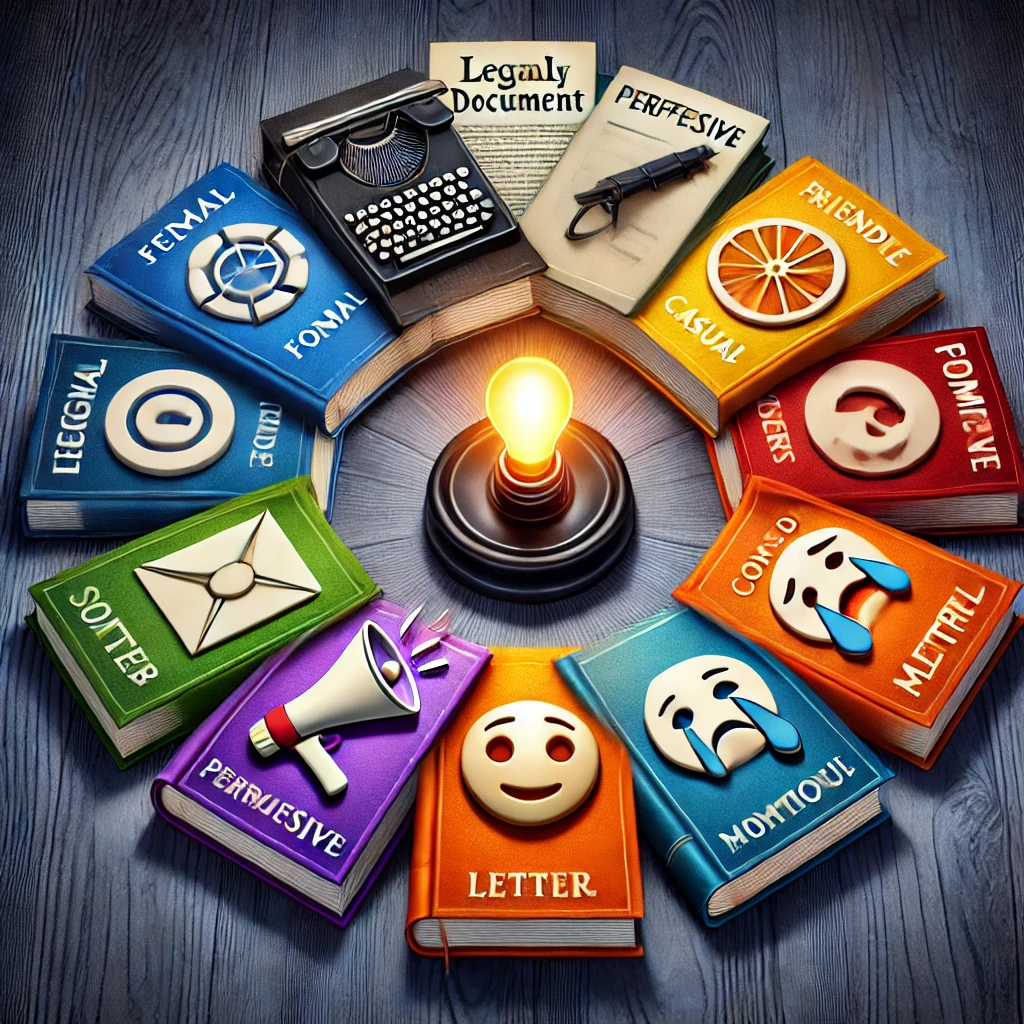Writing is more than just words on a page—it’s about how those words make the reader feel. The tone of a piece of writing plays an essential role in shaping its impact and effectiveness. Whether you are crafting a novel, business content, or an academic paper, understanding different writing tones is essential for conveying the right message.
At Book Planets, we help authors refine their work through ghostwriting services, ensuring their tone aligns with their purpose and audience. In this guide, we will explore the various types of tones in writing and how they can be used effectively.
What is Tone in Writing?
The tone in writing refers to the attitude and emotions expressed by the writer toward the subject and audience. It influences how readers perceive the message and can build the mood for an entire piece. Just as spoken words can be cheerful, serious, or sarcastic, written words carry different tones based on word choice, sentence structure, and style.
Writers, including those working with professional ghostwriters, must choose their tone carefully to ensure clarity, engagement, and authenticity in their writing.
10 Common Types of Tones in Writing
-
Formal Tone
A formal tone is used in academic, legal, and professional writing. It maintains a structured, objective, and respectful approach, avoiding contractions, slang, and personal anecdotes. This tone is common in research papers, business reports, and official documents, where clarity and professionalism are crucial. It conveys authority and credibility, ensuring that the information is taken seriously.
Example: “It is imperative that all employees adhere to the new policy guidelines to ensure workplace efficiency.” It avoids contractions, slang, and casual expressions while maintaining a respectful and structured approach.
-
Informal Tone
An informal tone is more relaxed, conversational, and personal. It often includes contractions, slang, and humor, making it suitable for blogs, personal stories, and casual social media posts. This tone helps build a connection with readers by making the writing feel approachable and engaging, mimicking everyday speech.
Example: “Hey there! Just a quick reminder to grab your tickets before they sell out.” It’s often used in blogs, social media posts, and casual communication.
-
Persuasive Tone
A persuasive tone aims to influence the reader’s thoughts, emotions, or actions. It is often used in marketing, opinion pieces, and political speeches. Writers use strong arguments, emotional appeals, and compelling language to convince the audience. This tone can be assertive and motivational, pushing the reader toward a particular belief or decision.
Example: “Don’t miss this limited-time offer—grab your exclusive deal today!” This tone is common in marketing, opinion pieces, and speeches.
-
Descriptive Tone
A descriptive tone focuses on vivid imagery, sensory details, and expressive language to create a compelling scene. It is often used in creative writing, novels, and poetry to immerse the reader in the setting, characters, and emotions. Writers use metaphors, similes, and adjectives to bring their words to life.
Example: “The golden sun dipped below the horizon, casting a warm glow over the tranquil sea.” It’s widely used in novels, poetry, and creative writing.
-
Serious Tone
A serious tone conveys importance, urgency, and professionalism. It is commonly found in news articles, legal documents, and academic writing, where the goal is to inform rather than entertain. This tone avoids unnecessary embellishments and focuses on factual, well-researched content that carries weight and credibility.
Example: “Climate change remains one of the most pressing challenges of our time, demanding immediate global action.”
-
Humorous Tone
A humorous tone injects wit, playfulness, and fun into writing. It often includes puns, irony, and exaggeration to entertain the reader. This tone is commonly used in comedic writing, satire, and blogs to make content more engaging and enjoyable. Humor helps keep readers interested and adds personality to the text.
Example: “If coffee didn’t exist, mornings would be illegal.” It’s effective in blogs, advertising, and comedic writing.
-
Optimistic Tone
An optimistic tone conveys hope, encouragement, and positivity. It is frequently used in motivational speeches, personal development blogs, and uplifting stories. This tone reassures readers that better things are ahead, inspiring them to take action and stay hopeful despite challenges.
Example: “Every setback is just a setup for an even greater comeback.”
-
Pessimistic Tone
A pessimistic tone focuses on negative aspects, doubts, or worst-case scenarios. It is often used in critical essays, dark fiction, or cautionary tales. While it can highlight issues and problems, excessive pessimism may make writing feel discouraging. However, when balanced, it can serve as a powerful tool for raising awareness or emphasizing challenges.
Example: “No matter how hard you try, success always seems just out of reach.”
-
Sarcastic Tone
A sarcastic tone uses irony, exaggeration, and mockery to make a point, often in a humorous or critical way. It is frequently found in satire, opinion pieces, and comedic writing. Sarcasm can add sharpness to a message, making it more memorable and engaging while also delivering a subtle critique.
Example: “Oh great, another Monday—just what we all needed.”
-
Inspirational Tone
An inspirational tone is uplifting and motivational, designed to encourage and energize readers. It is commonly used in self-help books, speeches, and religious or philosophical writings. Writers use powerful storytelling, personal anecdotes, and emotional appeals to inspire action and personal growth.
Example: “Believe in yourself, and you can achieve anything you set your mind to.”
Choosing the Right Tone for Your Writing
Selecting the right tone depends on various factors, including:
- Purpose: What is the goal of the writing? Informing, persuading, entertaining?
- Audience: Who will be reading it? Is it for professionals, general readers, or a specific niche?
- Context: What is the medium? A blog post, academic paper, or marketing copy?
By carefully considering these elements, writers can ensure that their tone aligns with their message and effectively reaches their target audience.
How Professional Ghostwriters Can Help
Many writers struggle with maintaining a consistent tone throughout their work. This is where a ghostwriting agency can be invaluable. Professional ghostwriters understand how to craft the perfect tone for any genre, ensuring clarity, engagement, and authenticity.
Benefits of Working with Ghostwriting Services:
- Expertise in Various Writing Styles: Ghostwriters adapt their tone to suit different industries and audiences.
- Time Efficiency: Writers can focus on their ideas while ghostwriters handle the execution.
- Polished and Professional Output: Ensures a refined, compelling final product.
If you need assistance with crafting the right tone for your writing, partnering with ghostwriting services can make a significant difference.
Conclusion
Understanding and mastering different writing tones is essential for effective communication. Whether you’re writing a formal business proposal, a humorous blog post, or an inspiring speech, the right tone enhances the reader’s experience and reinforces your message.
At Book Planets, our team of professional ghostwriters and editors can help you refine your writing tone for maximum impact. Whether you need a compelling book, an engaging article, or a persuasive marketing piece, we’re here to assist.

